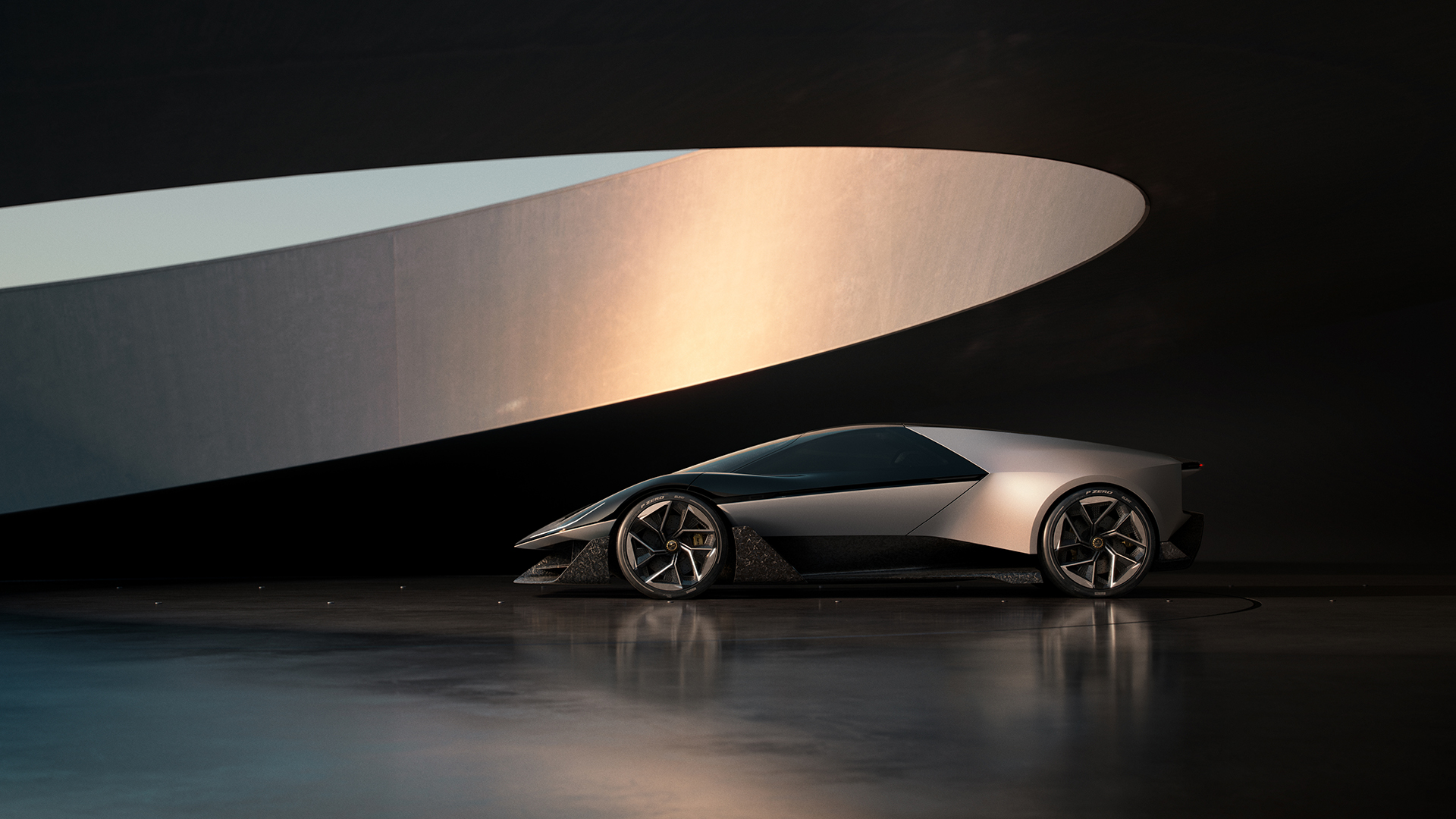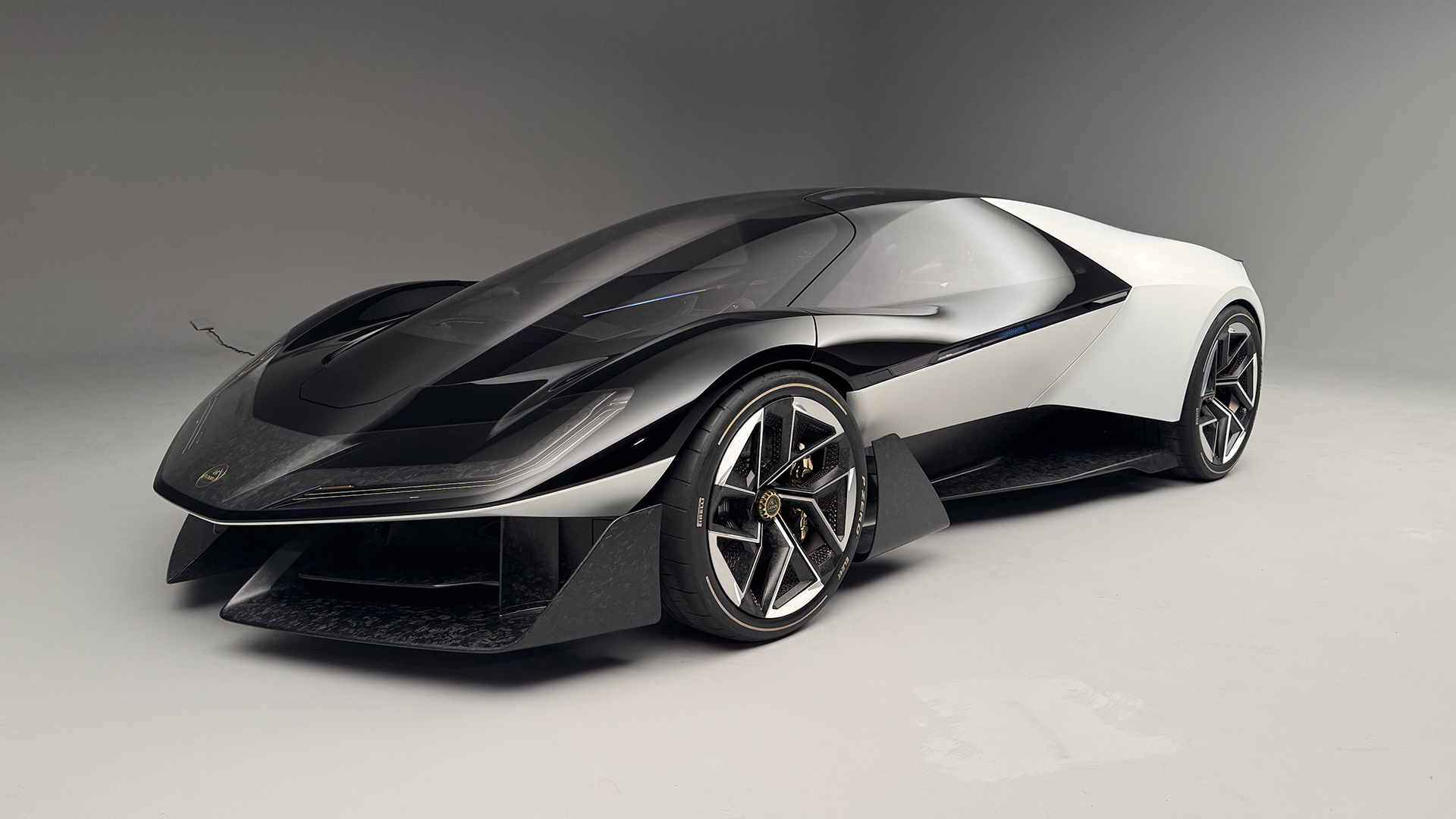
Lotus is keen to point out that its Theory 1 concept is not a future model. Rather, it's a representation of the company's design manifesto, a physical embodiment of its Digital, Natural and Analogue (DNA) core principals.
There's no denying that it looks incredible though. Pushing the boundaries of what is possible for a performance car, the Theory 1 looks every bit the Lotus and embraces elements from the company's 76 year history, and yet also looks like something from the future.
There are so many interesting elements of this concept car, that it's tough to know where to start. From the front lights to the rear spoiler, every part of this car shows off another clever bit of technology. If even a fraction of these advancements make it into the next production model, it will be mind blowing.
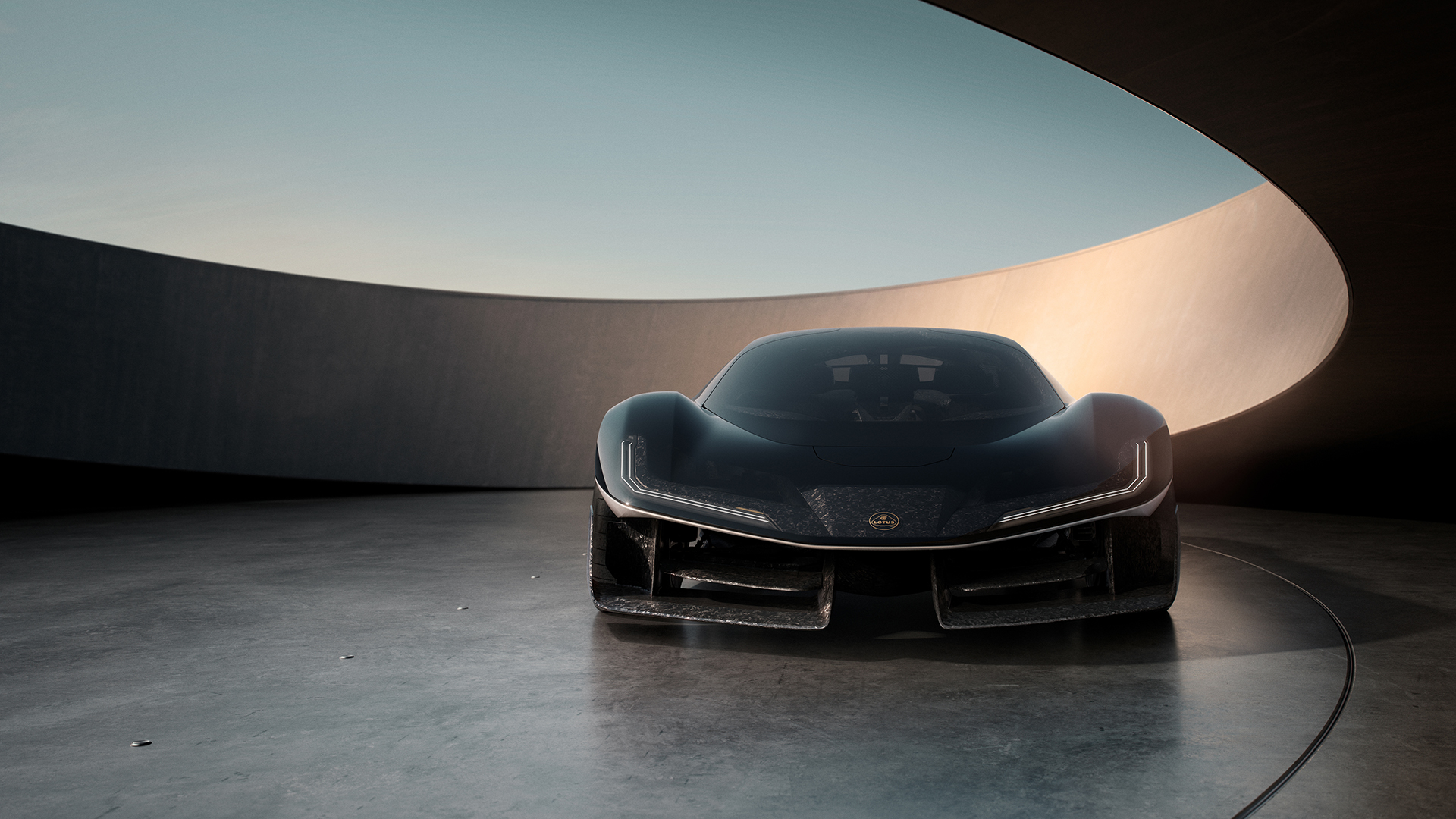
Laser lights
The name laser lights already sounds like something from the future, but these super lightweight devices are a step forward from LEDs when it comes to daylight running lights (DRL). Made by optical firm Kyocera, an ultra thin tube is suspended with tiny brackets to give the impression that the light is floating. The laser is fired down the tube, creating a solid bright light strip. The same is used front and back on the Theory 1.
While you can't do as much with the laser light as you can with LEDs, they are incredibly light weight. The main headlights, indicators and warning lights are all LED here, and the indicators can also shine green to show when the car is self driving – which is becoming a requirement in some countries.
The lights continue inside the vehicle in the dashboard wings and provide indication of left and right turning for navigation.
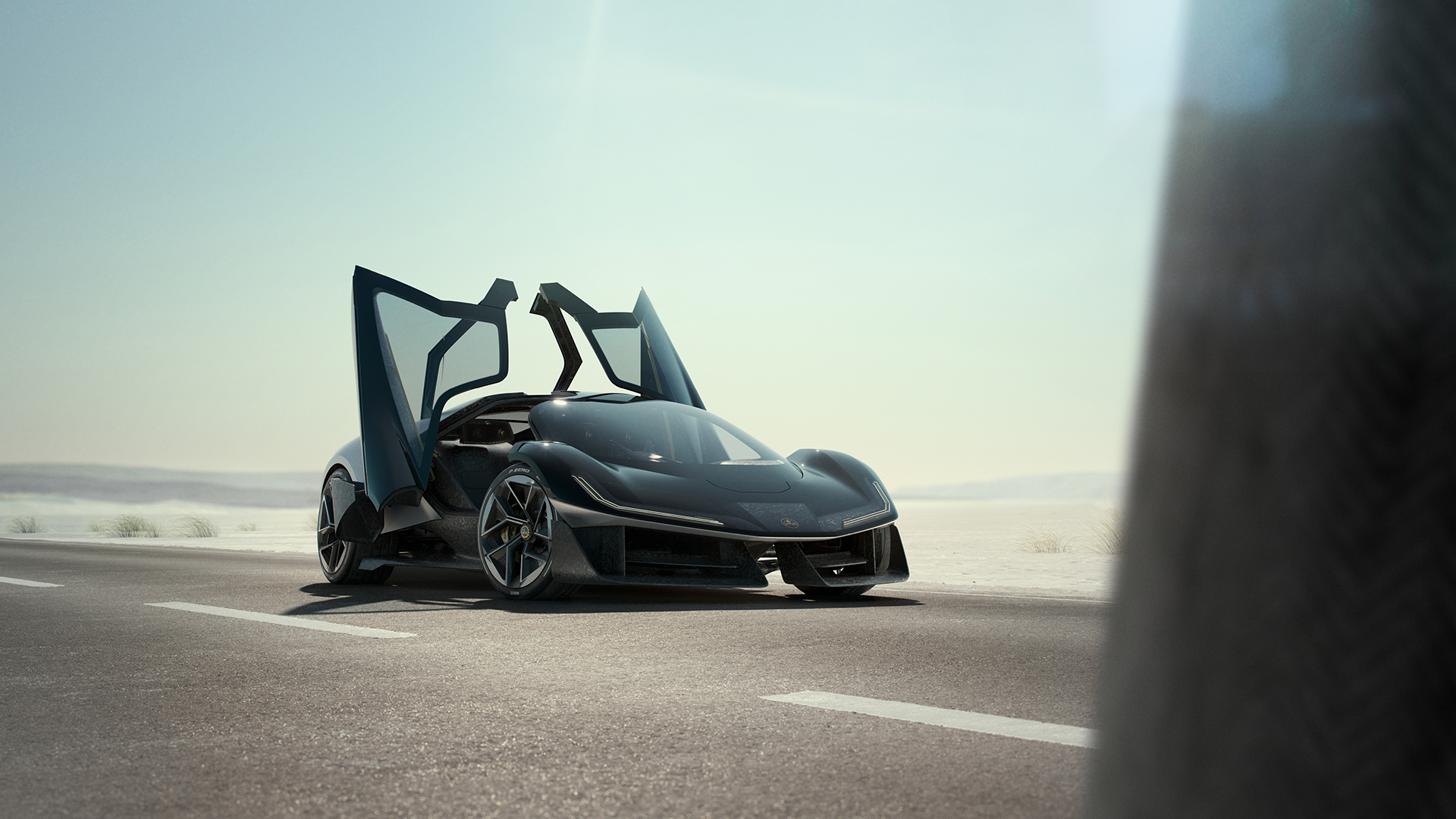
Scissor door design
There's a complex mechanism on the door opening that forms part of the roof of the Theory 1. This allows the door to open upwards almost completely vertically, rotating 90 degrees as it does so. This allows for a clear and easy entrance to the car, even when parked in a narrow space, and only extends upwards to around two metres, in case of low ceilings.
On the outside of the doors, an OLED strip runs across it and towards the front of the car. This can provide
Inside, the Theory one has been designed with three seats; one central driving position and two set slightly back from the driver. These seats are moulded parts of the bodywork, rather than separate seats. The pedals and steering wheel adjust position to suit the height of the driver and special MotorSkins not only provide padding but also feedback to the driver.
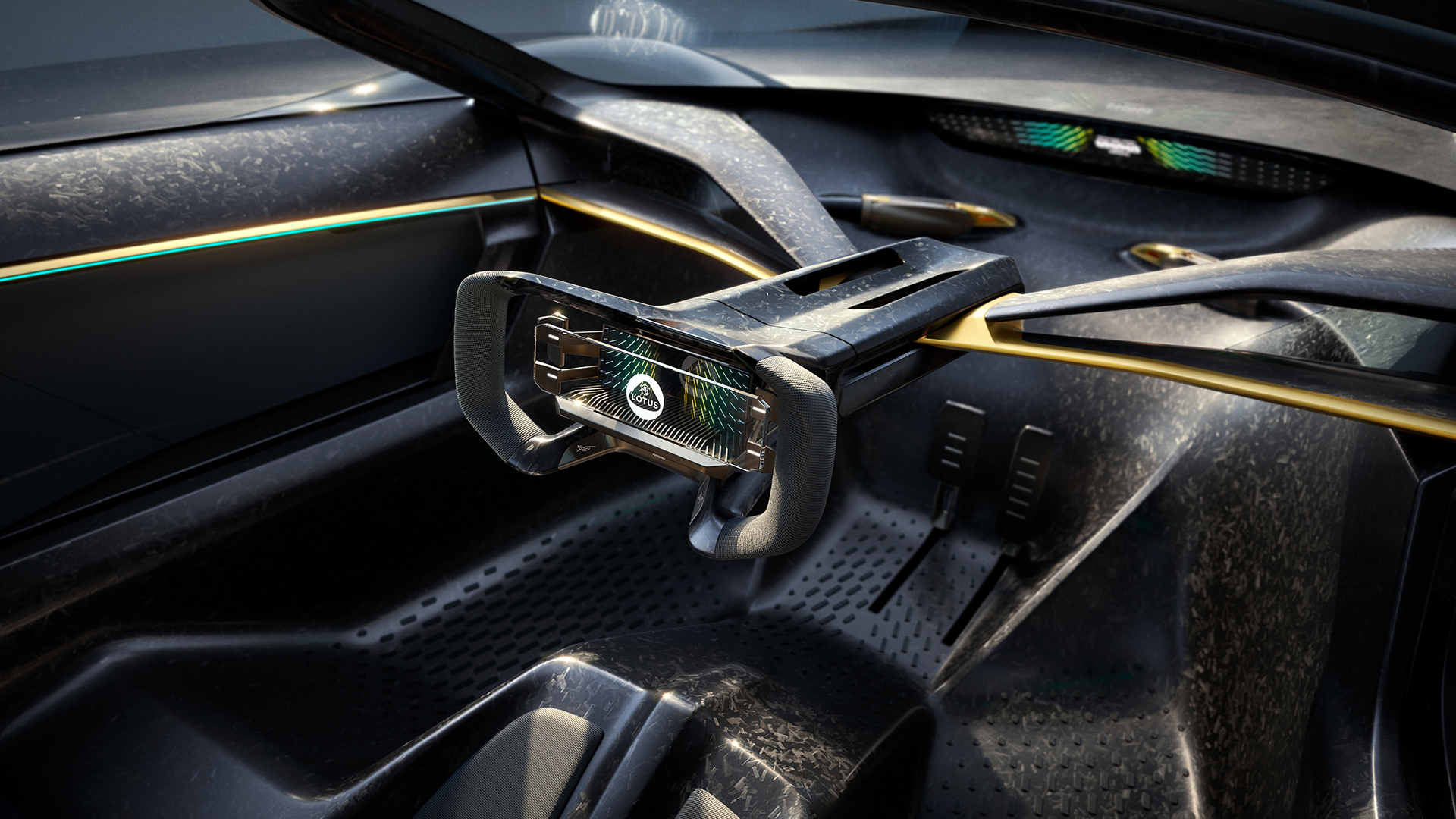
Screens and autonomous driving
From the driving position, there is an unusually limited amount of screens. Instead, most of your view is through the glass to the outside road. There's a relatively small screen just below the windscreen which shows speed information and some other driving dynamics. There are two screens for the wing mirror views from the cameras. Then, on the steering wheel itself there is a small screen and projected functions that correspond to the buttons and shifters on the sides of the yoke-style steering wheel.
When the car switches into its autonomous driving mode, the steering wheel moves back away from you, leaving you free to chat to your passengers. There's a surprising amount of space with the 1+2 arrangement and the passengers are still close enough to easily chat to the driver.
There are four deployable LiDar sensors on the vehicle, including a pop-up unit on the front nose. These are complemented by six HD cameras, and a combination of long and short-range radars.
Combining more lightweight design elements, the headrests of the three seats are made from 3D printed lattice structures that are soft and yet allow the sound from the KEF speakers to be completely unimpeded.
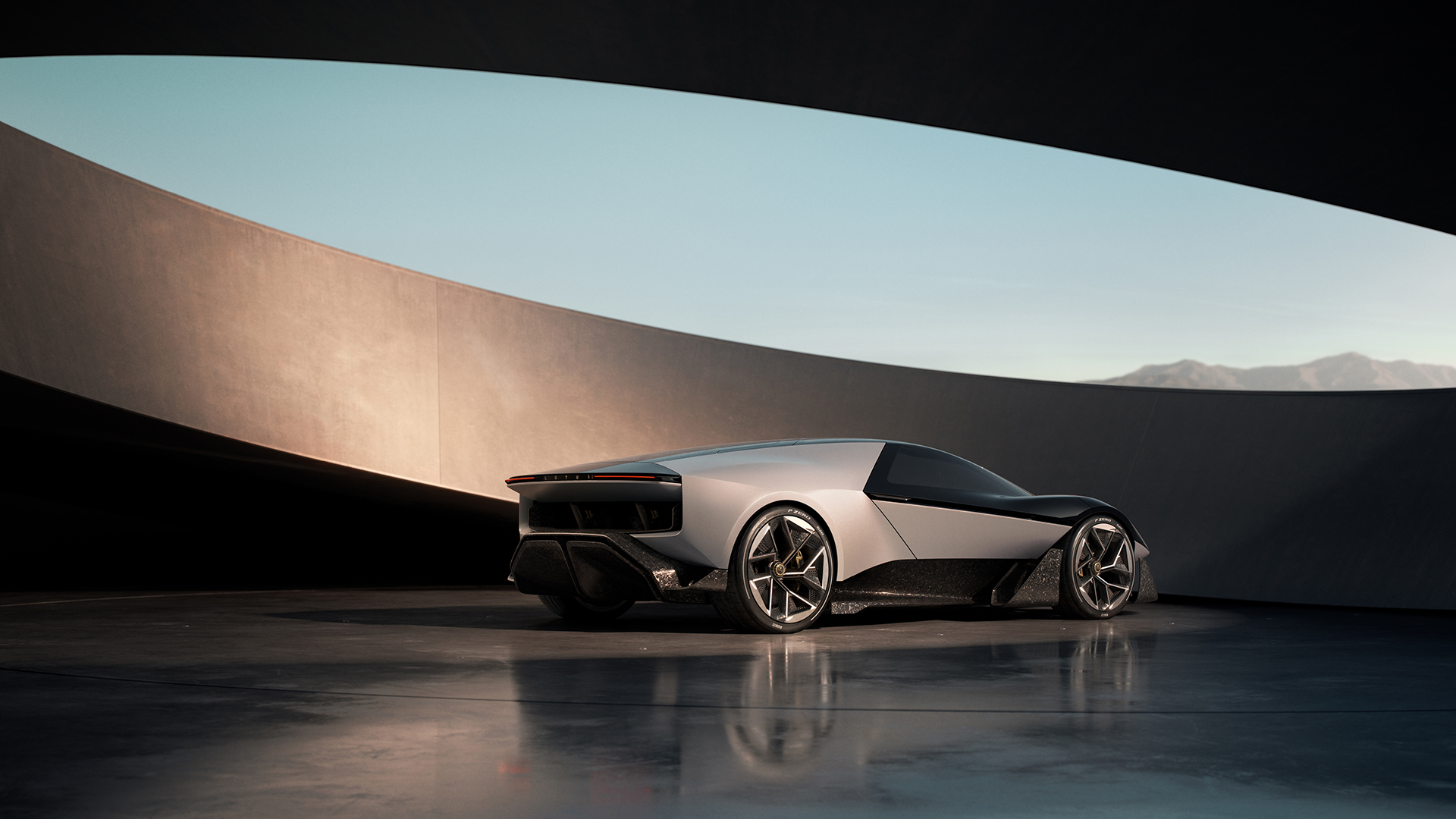
Deployable spoiler and charging
The rear wing is mounted directly onto the motor and suspension assembly, much like a Formula one car. The spoiler unit raises mechanically when extra downforce is needed and also acts as an airbrake in its upright position.
When raised, the spoiler also reveals the hidden charging points on the electrically powered vehicle. Fast charging, much like we've seen on the Lotus Emeya will allow you to quickly top up the 70kWh battery on the Theory 1 and provide roughly 250 miles of range on this lightweight model.
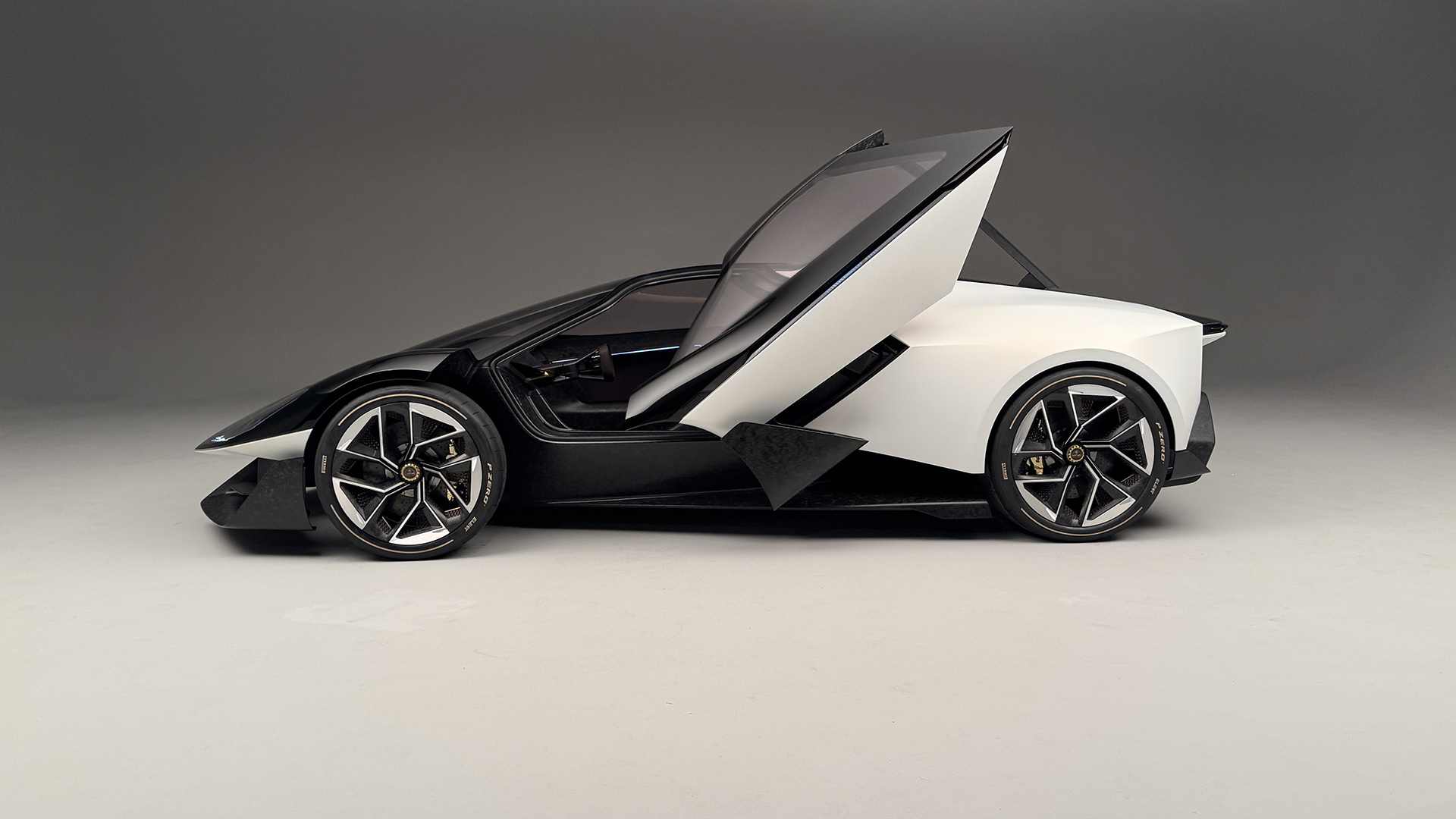
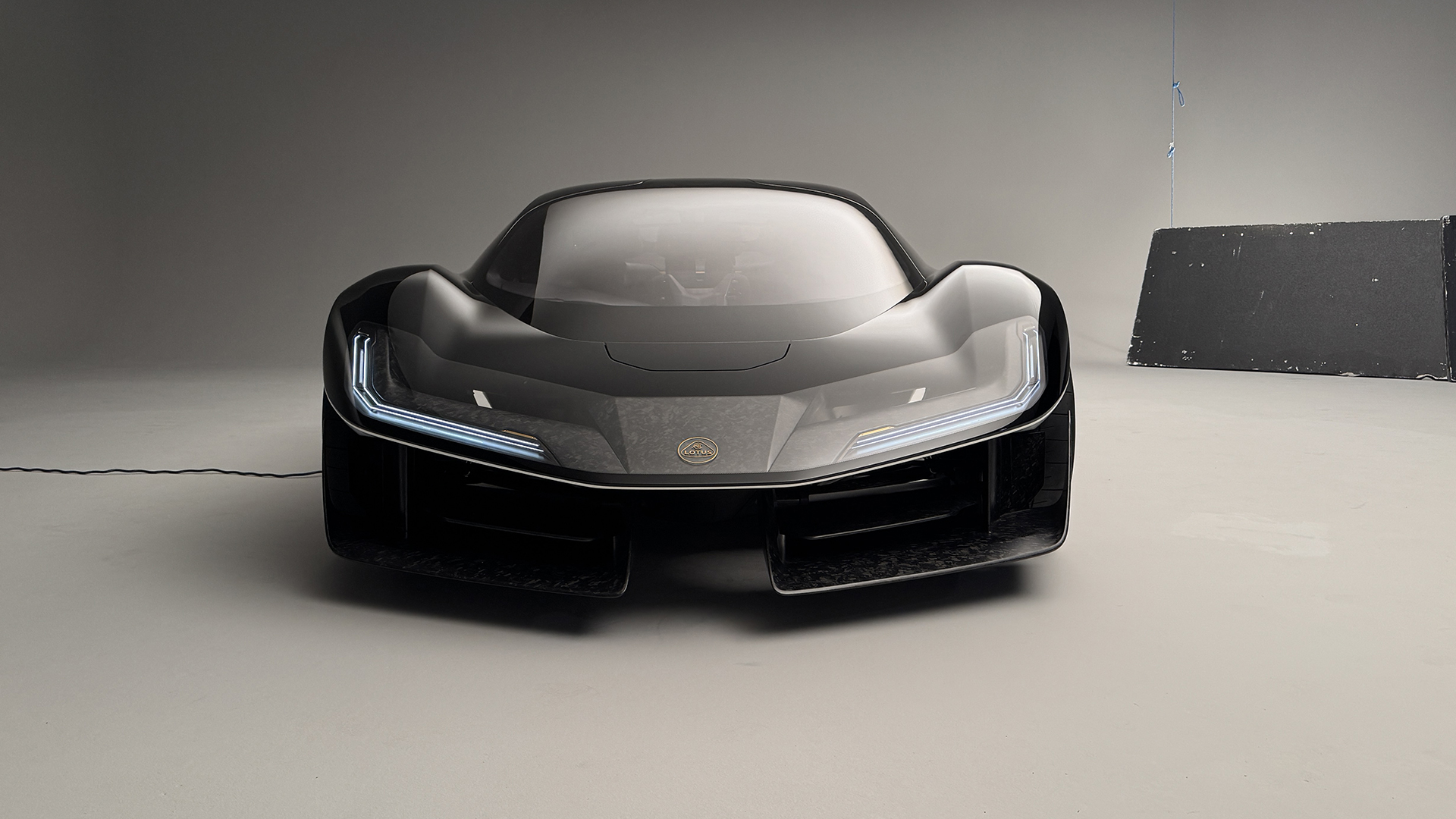
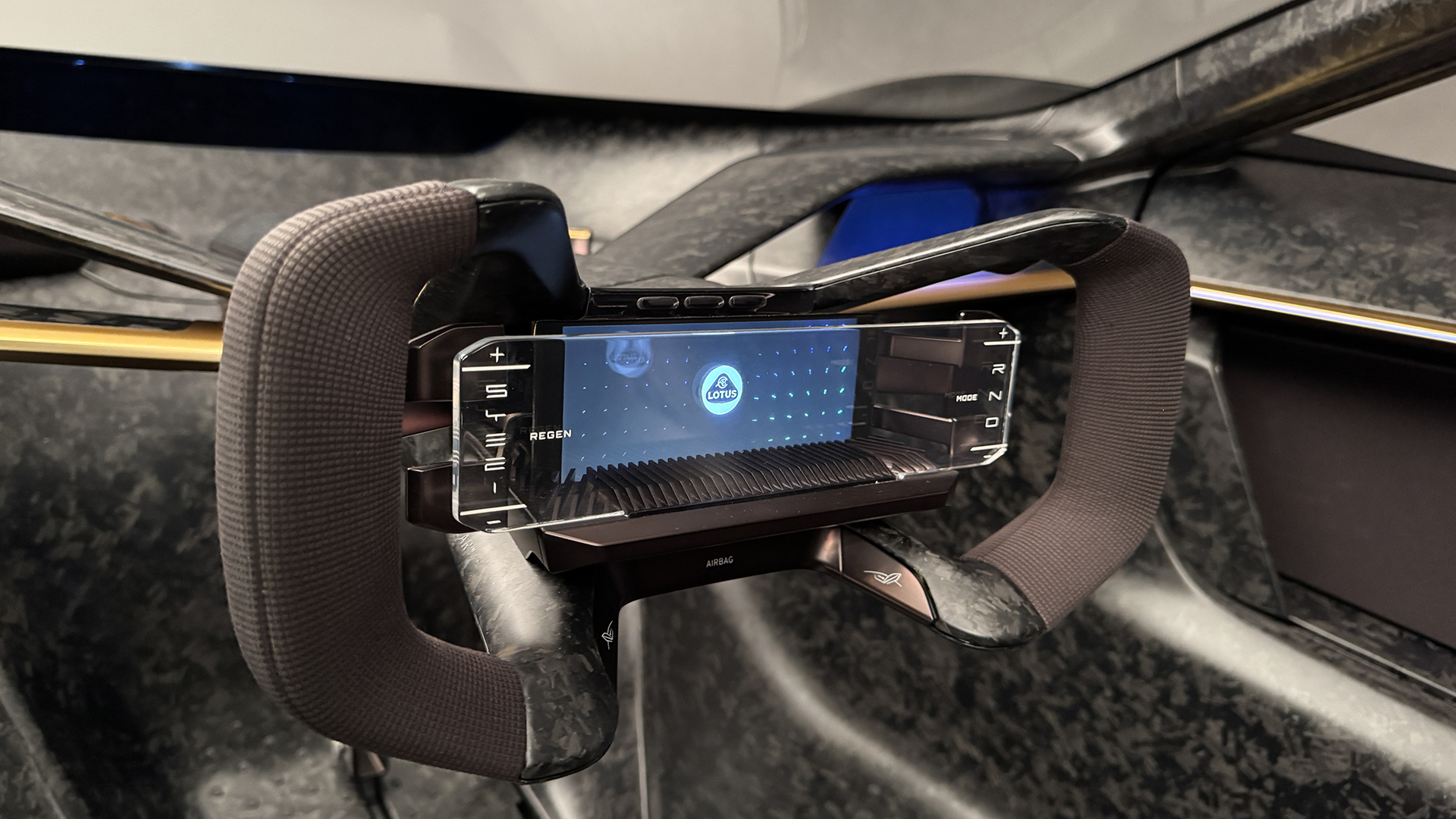
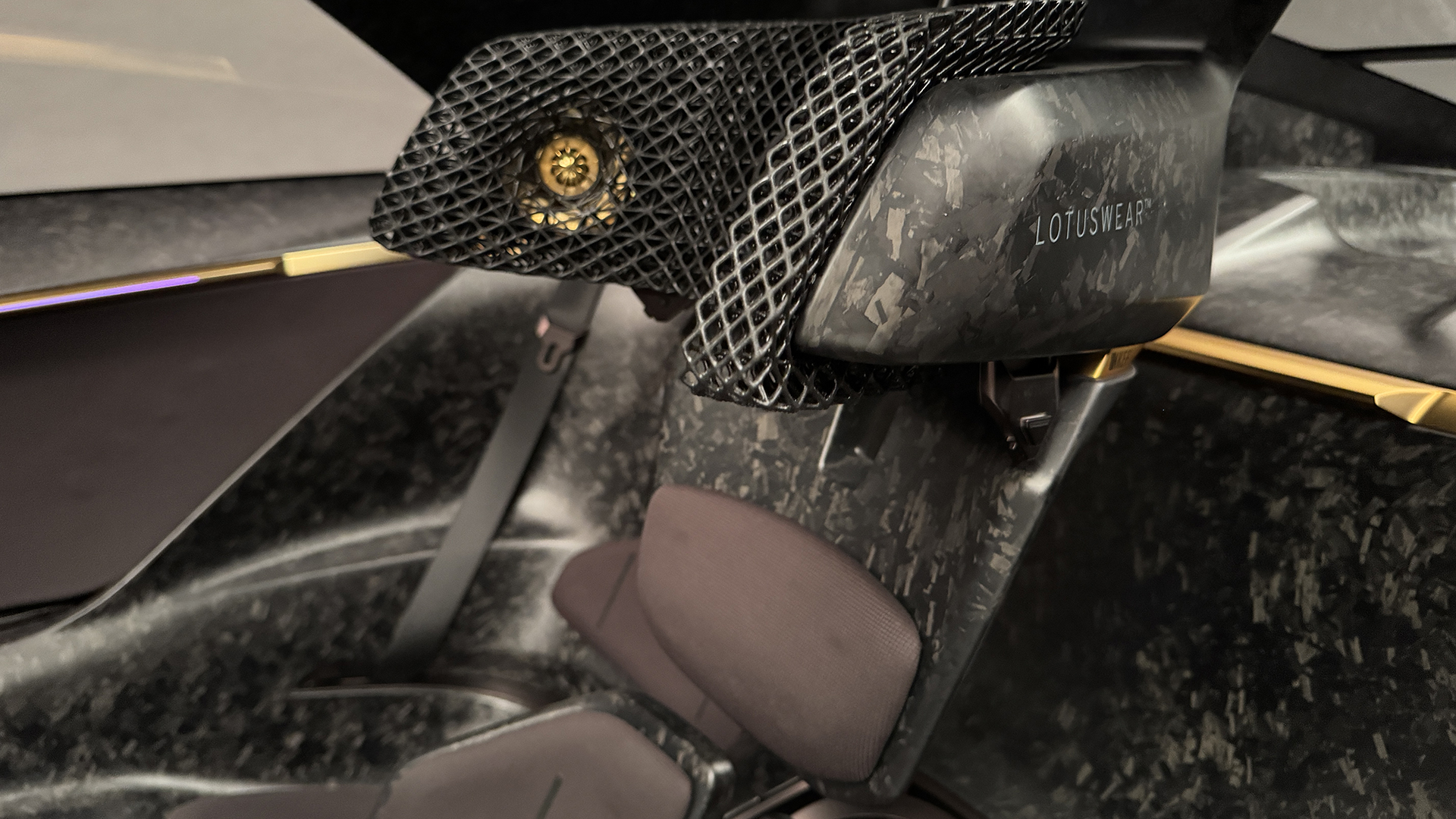
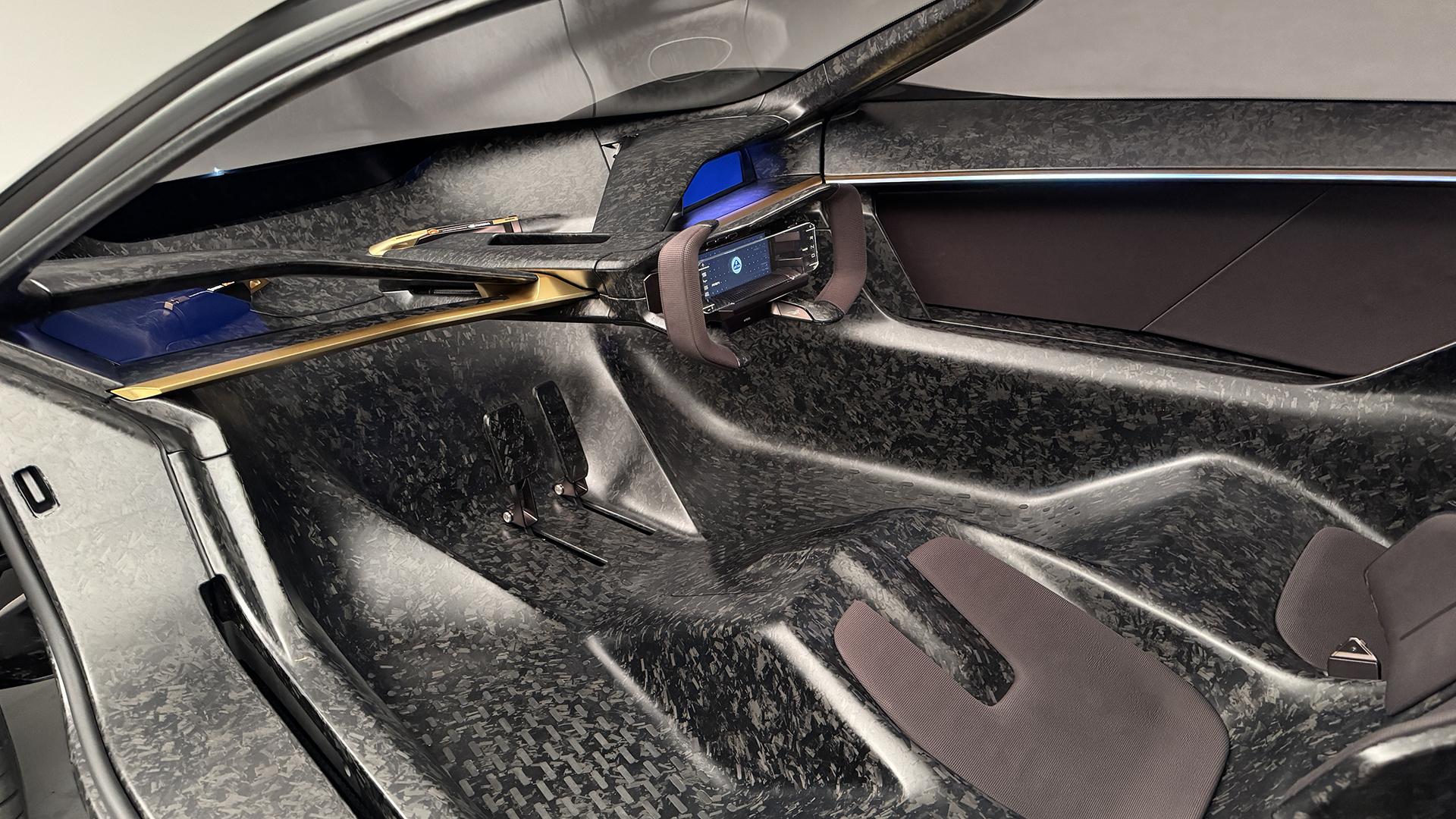
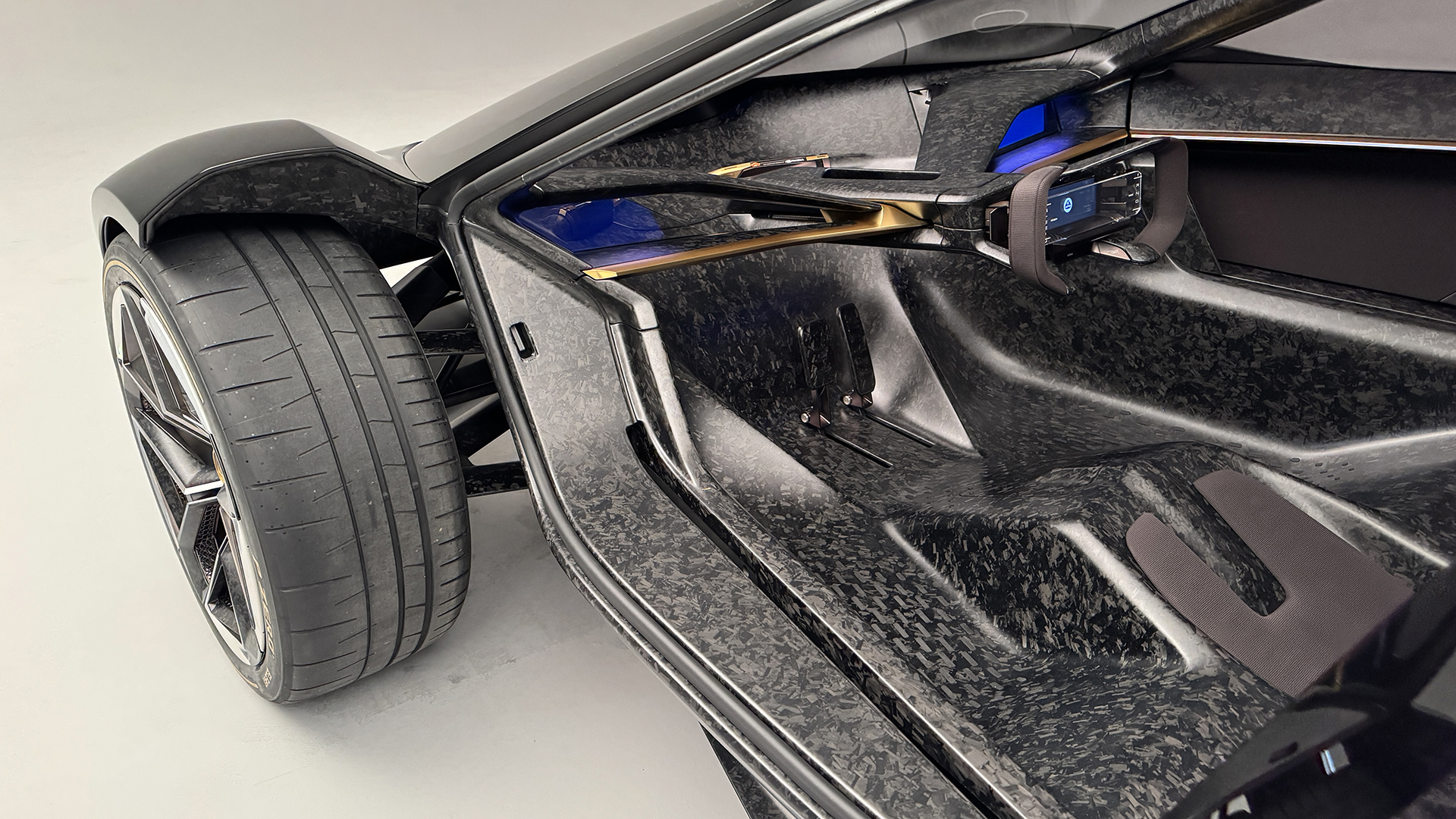
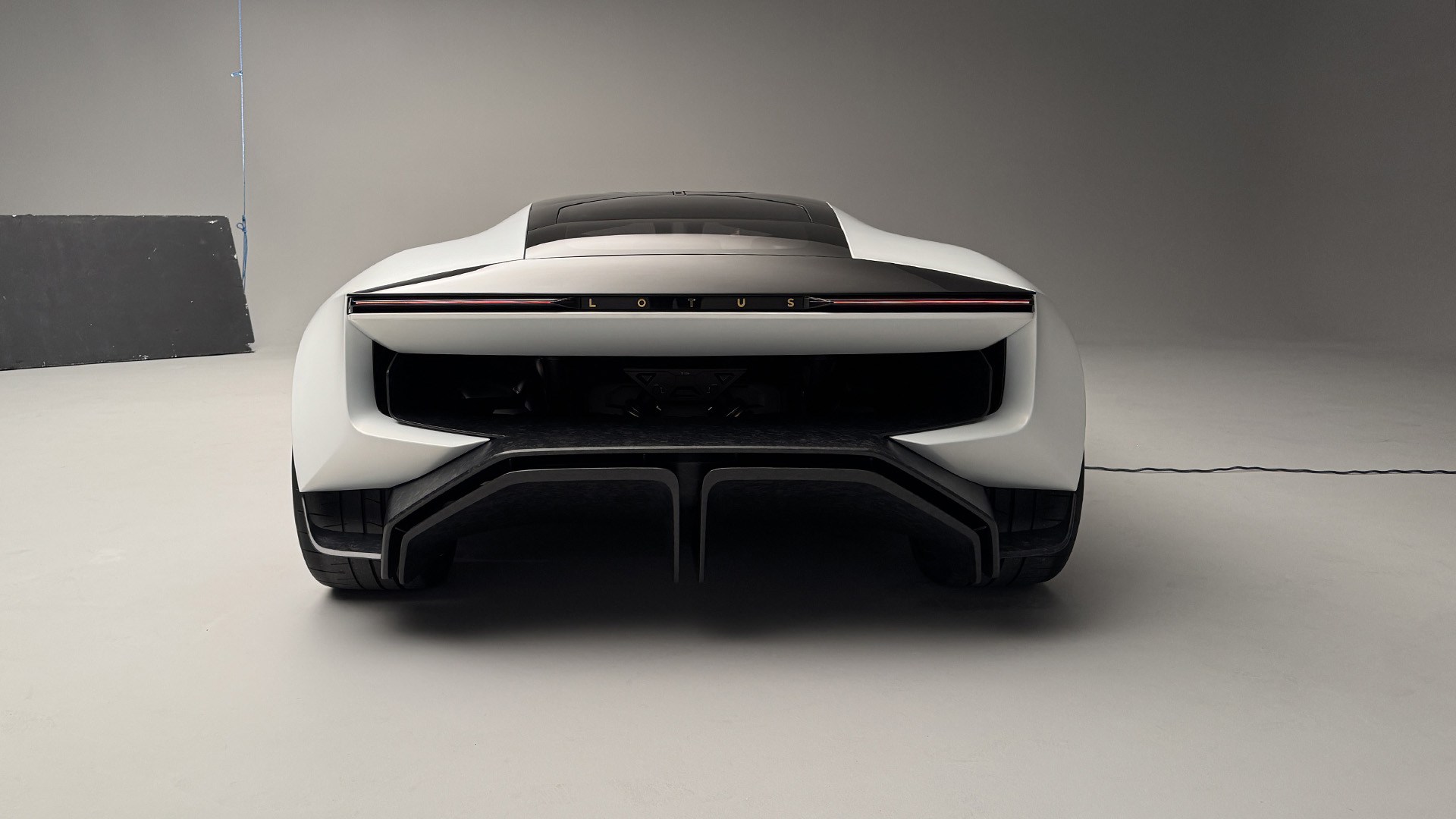

Future Lotus models
While the Lotus Theory 1 doesn't represent any direct future models, there are certainly suggestions of a small high performance daily driver here. It's the type of car that Lotus has been famous for, with models such as the Emira and the Elise – which let's not forget formed the basis of the very first Tesla Roadster.
I'd love to see the next model from Lotus be an electric version of the Emira or Elise, and even if it featured a few of these new design principals from the Theory 1, it would be incredible. Though if we're really wishing for something, I'd love the Theory 1 to be as close to a new model as possible.
